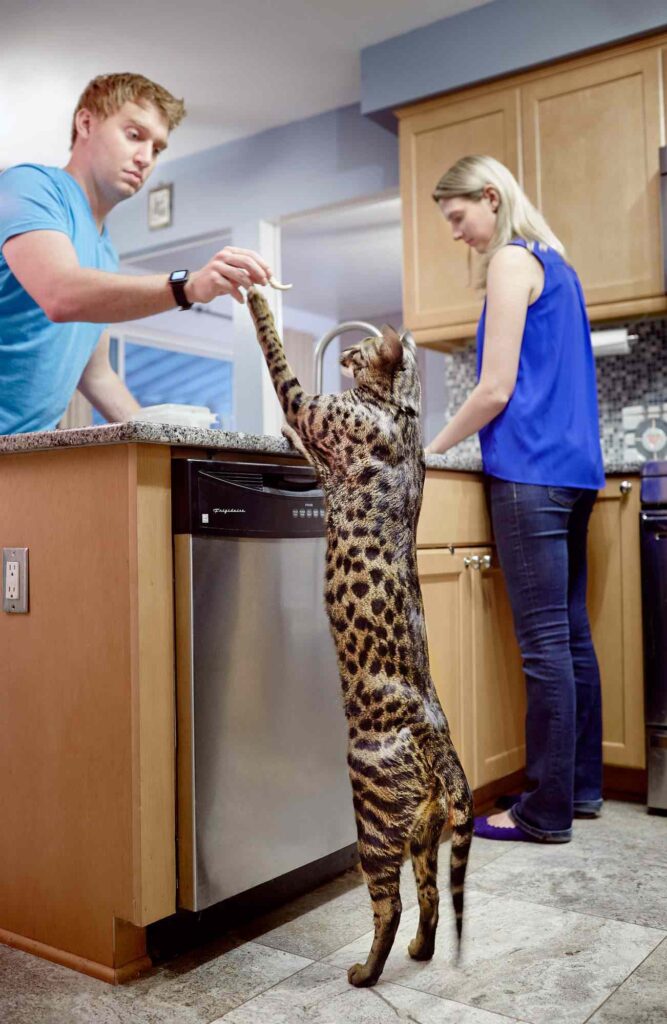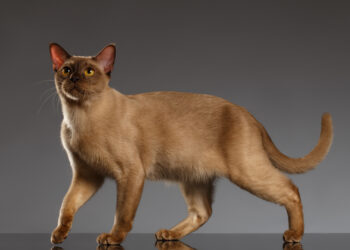“The smallest feline is a masterpiece.” – Leonardo da Vinci. This quote perfectly encapsulates the essence of the Savannah cat—a creature that merges the wild beauty of its serval ancestry with the charm of a house cat. As one of the largest domesticated breeds, the Savannah cat is renowned for its alluring elegance and impressive size, making it a fascinating topic for cat enthusiasts and pet owners alike.
The Allure of the Savannah Cat
Savannah cats are a hybrid breed, a cross between a domestic cat and a serval, a wild African cat. This unique lineage gives them their distinct appearance—tall, lean bodies, large ears, and a striking coat with bold spots and stripes. These features enhance their beauty and contribute to their agility and grace.

Facts and Statistics:
- Size and Weight: Savannah cats can reach up to 17 inches in height and weigh between 12 to 25 pounds, depending on the generation and gender.
- Lifespan: They typically live between 12 to 20 years, which is relatively long for a domesticated cat.
- Generations: The first generation (F1) is closest to the serval, with subsequent generations (F2, F3, etc.) being bred back with domestic cats, resulting in varying degrees of serval traits.
Understanding the Unique Characteristics
Personality and Behavior: Savannah cats are known for their high energy levels, intelligence, and curiosity. They exhibit dog-like behaviors, such as following their owners around, playing fetch, and being trained to walk on a leash. Their social nature makes them great companions, but their need for stimulation means they thrive best in environments where they can stay active and engaged.
Physical Traits:
- Coat and Colors: Their coat patterns can vary, but they generally have a golden, brown, silver, or black base with dark spots and stripes.
- Body Structure: They have a lean and muscular build, with long legs and a short, thick tail. Their large ears are set high on their heads, adding to their wild appearance.
Caring for a Savannah Cat
Diet and Nutrition: Given their high energy levels, Savannah cats require a diet rich in protein. Raw or high-quality commercial cat food is recommended to meet their nutritional needs. Regular feeding schedules and portion control are essential to prevent obesity.

Exercise and Enrichment: Savannah cats need plenty of exercise to stay happy and healthy. Interactive toys, climbing structures, and regular playtime are crucial. Consider providing a safe outdoor enclosure or leash training to allow them to explore and satisfy their curiosity.
Health and Wellness: Regular veterinary check-ups are essential to monitor their health. Savannah cats are generally healthy, but they can be prone to certain conditions like hypertrophic cardiomyopathy (HCM). Early detection and treatment are vital to ensure a long, healthy life.
Challenges and Considerations
Owning a Savannah cat can be rewarding, but it’s not without challenges. Their high energy levels and intelligence mean they can become bored easily, leading to destructive behavior if not properly stimulated. Potential owners should be prepared to invest time and effort into providing a suitable environment.
Additionally, due to their wild ancestry, some regions have restrictions on owning Savannah cats, particularly the F1 and F2 generations. It’s important to check local regulations before acquiring one.
Conclusion
The Savannah cat is a remarkable breed that combines the allure of a wild cat with the affectionate nature of a domestic pet. Their impressive size, unique appearance, and engaging personality make them a standout choice for cat lovers seeking an extraordinary companion. Whether you’re captivated by their majestic looks or intrigued by their playful antics, the Savannah cat offers a truly unique pet ownership experience.





















